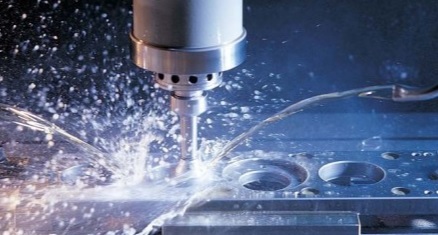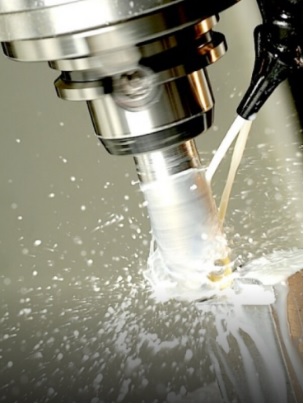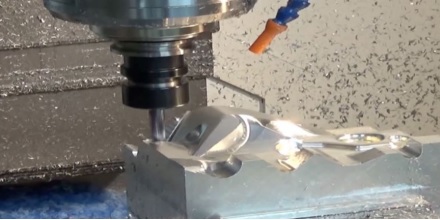Milling Manufacturing Process: Definition, Parameter, Process & Cost
What is the milling manufacturing process?
In its essence, the milling manufacturing process is removing material from a dedicated workpiece through rotary cutting. The cutter in a mill often has multiple cutting points, and generally moves perpendicularly on an axis, cutting with the tool’s circumference into the workpiece.
The milling manufacturing process can produce shaping as well as details in a piece: shapes, slots, holes, notches, grooves, pockets, and specialty faces are all results of custom millwork.
As a cutter works a piece, the tool’s edges make countless small, quick cuts in the material to sculpt its surface. The shaved off pieces from each pass are called chips or swarf, which must be pushed aside or removed as the process continues.

Introduction to milling
The milling machine is one of the important machining operations. In this operation, the workpiece is fed against a rotating cylindrical tool. The rotating tool consists of multiple cutting edges (multipoint cutting tool). Normally axis of rotation of feed given to the workpiece. Milling operation is distinguished from other machining operations on the basis of orientation between the tool axis and the feed direction, however, in other operations like drilling, turning, etc. the tool is fed in the direction parallel to the axis of rotation.
The cutting tool used in milling operation is called a milling cutter, which consists of multiple edges called teeth. The machine tool that performs the milling operations by producing required relative motion between workpiece and tool is called milling machine. It provides the required relative motion under very controlled conditions. These conditions will be discussed later in this unit as milling speed, feed rate and depth of cut.
Normally, the milling operation creates plane surfaces. Other geometries can also be created by the milling machine. Milling operation is considered an interrupted cutting operation teeth of milling cutter enter and exit the work during each revolution. This interrupted cutting action subjects the teeth to a cycle of impact force and thermal shock on every rotation. The tool material and cutter geometry must be designed to bear the above-stated conditions. Depending upon the positioning of the tool and workpiece the milling operation can be classified into different types.

Milling manufacturing process cutting parameter
There are three major cutting parameters to be controlled in any milling operation. These three parameters are cutting, speed, feed rate and depth of cut. These parameters are described below.
Cutting Speed
Cutting speed of a milling cutter is its peripheral linear speed resulting from operation. It is expressed in meters per minute. The cutting speed can be derived
from the above formula.
V = πDN /1000
where,
d = Diameter of milling cutter in mm,
V = Cutting speed (linear) in meter per minute, and
n = Cutter speed in revolution per minute.
Spindle speed of a milling machine is selected to give the desired peripheral speed of cutter.
Feed Rate
It is the rate with which the workpiece under process advances under the revolving milling cutter. It is known that revolving cutter remains stationary and feed is
given to the workpiece through worktable. Generally feed is expressed in three ways.
1. Feed per Tooth
It is the distance traveled by the workpiece (its advance) between engagement by the two successive teeth. It is expressed as mm/tooth (ft).
2. Feed per Revolution
Travel of workpiece during one revolution of milling cutter. It is expressed as mm/rev. and denoted by f(rev).
3. Feed per Unit of Time
Feed can also be expressed as feed/minute or feed/sec. It is the distance advances by the workpiece in unit time (fm).
Above described three feed rates are mutually convertible.
(fm). = n x f(rev).
where n = rpm of cutter.
It can be extended further as
(fm). = n x f(rev). = z x n x f(rev)
where z = Number of teeth in milling cutter.
Depth of Cut
Depth of cut in milling operation is the measure of penetration of cutter into the workpiece. It is thickness of the material removed in one pairs of cutter under
process. One pairs of cutter means when cutter completes the milling operation from one end of the workpiece to another end. In other words, it is the
perpendicular distance measured between the original and final surface of workpiece. It is measured in mm.

Overview of CNC milling manufacturing process
Like most conventional mechanical CNC machining processes, the CNC milling manufacturing process utilizes computerized controls to operate and manipulate machine tools which cut and shape stock material. In addition, the process follows the same basic production stages which all CNC machining processes do, including:
1. Designing a CAD model
2. Converting the CAD model into a CNC program
3. Setting up the CNC milling machine
4. Executing the milling operation
CNC milling operations
Milling is suitable for many different features, including threading, chamfering, slotting, etc. This allows for producing complex designs on a single CNC milling centre with enviable accuracy. The tolerances are around +/- 0.1 mm.
The creation of these aforementioned features requires a variety of different milling operations:
surface milling, face milling, angular milling, form milling, profile milling, gear milling, etc.
What are suitable cutting materials for CNC milling?
So, what can you cut with a CNC mill? Well, basically any rigid material as long as it’ s bigger than what you want to end up with. Metals of all sorts are great - from soft aluminum to high strength tool steel alloys. Hard plastics machine nicely as well.
Metals suitable for CNC milling:
· Mild steel
· Stainless steel
· Tool steel
· Aluminium
· Brass
Plastics suitable for milling:
· ABS
· Nylon
· Polycarbonate
· POM
· PTFE
· HDPE
· PEEK
What are the CNC milling costs?
Unlike most processes, CNC costs for prototyping and production are identical. The process is the same in both cases. Like most production processes, you’ll pay a little premium for setup and amortize those costs over higher or lower volumes. Regardless, the cost structure is consistent between prototype and production runs. Under all typical circumstances, no capital investment in specialized tooling is required. In fact, CNC milling is the most common method used to produce the initial capital investment tooling for other high-volume processes.
Widely accessible and versatile, CNC milling shops can be found in just about every city. Some very uncommon specialized requirements may narrow possible vendors such as extremely large part sizes or requirements for machining specialized materials like metals containing lead. When choosing a vendor for your project, the quantity and type of equipment they have (3-axis vs 5-axis) and their experience will qualify their capability. The rest is pursuing a business arrangement that matches your needs for volume, delivery & payment terms, and value-added services you may require. There is skill in setting up and maintaining the machinery, but a computer controls the precision and consistent operation of the machinery. Finding the right CNC milling vendor is all about finding an agreeable company to work with that has the machines your product requires.


